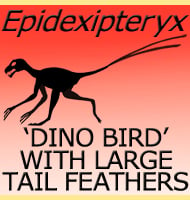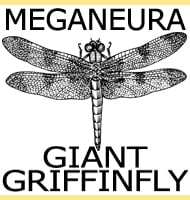In Depth
Simosuchus is a genus of small and probably vegetarian crocodile that lived in Madagascar during the late Cretaceous. The vegetarian theory about the diet comes from study of the teeth and jaws which are much better suited to processing plant material than flesh. Simosuchus also exhibits a greatly reduced tail, quite possibly because Simosuchus spent all of its life on land and had no need for the tail to push it through the water while swimming.
Simosuchus was covered in bony armour plates technically known as osteoderms. These bony plates were so tightly packed in places that they would have formed flexible shields covering the upper back, tail and parts of the limbs. These tough shields would have been a formidable defence against the teeth and claws of dromaeosaurid dinosaurs such as Rahonavis which were around at the same time as Simosuchus. It is questionable however how much defence the bony shields would have provided against larger predators such as larger abelisaurid dinosaurs like Majungasaurus if they were so inclined to tackle a Simosuchus.
Simosuchus has been speculated to have been similar to Libycosuchus from Egypt, and remains of a Simosuchus-like notosuchian crocodile have now also been found in India (Prasad et al, 2013). What these discoveries may indicate is that crocodiles like Simosuchus may have been present at least across the African and Asian portions of Gondwana during the Late Cretaceous, but in Madagascar the Simosuchus population may have been more concentrated, allowing for more fossil remains to be found there.
Further Reading
- A pug-nosed crocodyliform from the Late Cretaceous of Madagascar. - Nature 405:941-944. - G. A. Buckley, C. A. Brochu, D. W. Krause & D. Pol - 2000. - Postcranial axial skeleton of Simosuchus clarki (Crocodyliformes: Notosuchia) from the Late Cretaceous of Madagascar. - Journal of Vertebrate Paleontology 30 (6, Supplement): 99–121. - J. A. Georgi & D. W. Krause - 2010. - Appendicular skeleton of Simosuchus clarki (Crocodyliformes: Notosuchia) from the Late Cretaceous of Madagascar. - Journal of Vertebrate Paleontology 30 (6, Supplement): 122–153. - J. J. W. Sertich & J. R Groenke - 2010. - Osteoderms of Simosuchus clarki (Crocodyliformes: Notosuchia) from the Late Cretaceous of Madagascar - Journal of Vertebrate Paleontology 30 (6, Supplement): 154–176. - R. V. Hill - 2010. - Phylogenetic history of Simosuchus clarki (Crocodyliformes: Notosuchia) from the Late Cretaceous of Madagascar. - Journal of Vertebrate Paleontology 30 (6, Supplement): 177–236. - A. H. Turner & S. W. Sertich - 2010. - A new Late Cretaceous vertebrate fauna from the Cauvery Basin, South India: implications for Gondwanan paleobiogeography. - Journal of Vertebrate Paleontology vol 33, issue 6. - Guntupalli V. R. Prasad, Omkar Verma, John J. Flynn & Anjali Goswami - 2013.










